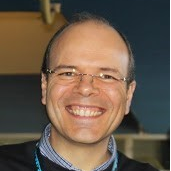The Role of Minerals in Cultural and Geological Heritage
A special issue of Minerals (ISSN 2075-163X). This special issue belongs to the section "Crystallography and Physical Chemistry of Minerals & Nanominerals".
Deadline for manuscript submissions: closed (8 April 2022) | Viewed by 42222
Special Issue Editors
Interests: cultural heritage; mining heritage; mineralogy; crystallography; crystal chemistry; ceramics; glasses; mortars; rock weathering; synchrotron radiation
Special Issues, Collections and Topics in MDPI journals
Interests: cultural heritage; conservation sciences; ceramic; glass, glazes; mineralogy; historical material research; biodeterioration; deterioration processes; conservation-restoration
Special Issues, Collections and Topics in MDPI journals
Interests: cultural heritage; archaeometallurgy; mineralogy; geological heritage; ancient mining; bronze and tin; conservation sciences
Special Issues, Collections and Topics in MDPI journals
Special Issue Information
Dear Colleagues,
This Special Issue of Minerals, essential raw materials for the development of societies, focuses on the special role of minerals in cultural heritage, either by their application or existence in tangible heritage such as monuments, buildings, works of art, historical artefacts and objects of cultural value, as well as in the natural heritage generated by the geological, mining and industrial structures that are the sources of these raw materials.
The definition of cultural heritage by the council of Europe as a resource inherited from the past which humanity identifies as a reflection and expression of their constantly evolving values, beliefs, knowledge and traditions, thus gains special significance and expression, considering the fundamental role of minerals in the comprehension of properties and behavior of this heritage.
This Special Issue intends to bridge heritage and mineral science, and we encourage all experts working in related areas to submit their contributions. Topics of special interest include but are not limited to glasses, ceramics, metals, stone/rocks and mortars, their properties, behavior, aging, and degradation; historical mining and mining heritage, geoarchaeology, geoheritage and industrial heritage related to mining; historical technological processes, archaeometry, dating and authenticity; characterization techniques, new materials and methodologies, conservation, best practices and case studies; minerals related to mining activity, rock weathering, soils, valorization of cultural landscape, geo-tourism in historical mining sites and geological sites; monitoring and remote sensing, modelling and theoretical approaches, data management, risk assessment, soil contamination/remediation, acid mine drainage, ecological solutions, maintenance and sustainability; as well as climate impact and social impact.
We look forward for your submissions!
Prof. Dr. João Pedro Veiga
Dr. Mathilda L. Coutinho
Dr. Elin Figueiredo
Guest Editors
Manuscript Submission Information
Manuscripts should be submitted online at www.mdpi.com by registering and logging in to this website. Once you are registered, click here to go to the submission form. Manuscripts can be submitted until the deadline. All submissions that pass pre-check are peer-reviewed. Accepted papers will be published continuously in the journal (as soon as accepted) and will be listed together on the special issue website. Research articles, review articles as well as short communications are invited. For planned papers, a title and short abstract (about 100 words) can be sent to the Editorial Office for announcement on this website.
Submitted manuscripts should not have been published previously, nor be under consideration for publication elsewhere (except conference proceedings papers). All manuscripts are thoroughly refereed through a single-blind peer-review process. A guide for authors and other relevant information for submission of manuscripts is available on the Instructions for Authors page. Minerals is an international peer-reviewed open access monthly journal published by MDPI.
Please visit the Instructions for Authors page before submitting a manuscript. The Article Processing Charge (APC) for publication in this open access journal is 2400 CHF (Swiss Francs). Submitted papers should be well formatted and use good English. Authors may use MDPI's English editing service prior to publication or during author revisions.
Keywords
- glasses, ceramics and metals in cultural heritage
- stone/rocks and mortars in built heritage
- minerals and mineralogical phases
- minerals related to mining sites
- geological sites
- non-destructive methodologies
- large scale facilities (synchrotron, neutron and ion beam)
- authenticity and dating
- effects of climate changes
- modelling and theoretical approaches
- remote sensing and risk management
- maintenance and sustainability
- social impact and cultural tourism







